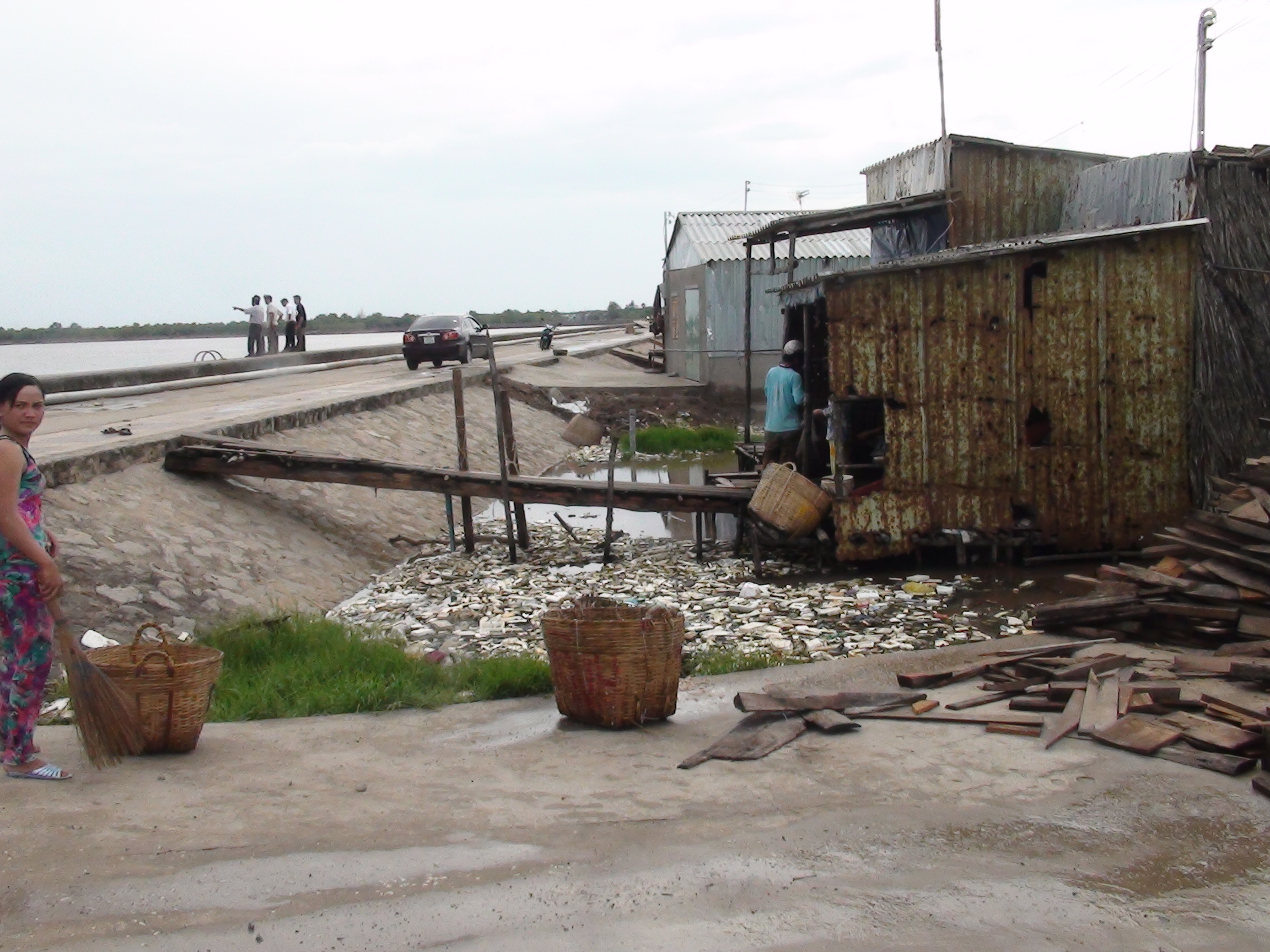Coastal dike - "the fake safety" or potential risks
Posted Date: Monday, October 8, 2012
| Source: www.warecod.org.vn
On 12th and 13th May 2012, WARECOD co-organized a fieldtrip in the Mekong Delta to investigate the potential impacts of Mekong mainstream dams to downstream in Vietnam. The trip was conducted with the participation of 3 experts from the Delta (Dr. Duong Van Ni and Dr. Le Anh Tuan, Mr. Nguyen Huu Thien), 5 journalists and reporters (from Nong nghiep, Saigon Tiep thi, Thanh nien, Tien Phong and Cong san Newspapers), along with WARECOD staff.
The group witnessed the erosion in Bac Lieu, the disappearance of mangrove in the seashore of Soc Trang and studied how the natural flows of the Mekong river will change in case of the Mekong dams construction and how the lives and livelihoods of millions of Mekong citizens will change accordingly. Below are some pictures from the fieldtrip:
A fisherman in Bac Lieu province
This man catches fish in the canals around the paddy field in Bac Lieu province. Everyday, he walks 5 miles and catches fish from 9am until 3pm. Meanwhile, the amount of fish can be caught is decreasing and the canals is getting aluminous.
.JPG)
Journalists and Dr. Le Anh Tuan asked about the livelihoods of the fisherman in Bac Lieu

The living environment in Ganh Hao, Dong Hai district, Bac Lieu province is contaminated. A dyke to protect the seashore from erosion has been built in front of the houses. The dyke, however, is being downgraded and eroded.

A garbage dump near the sea and the residential area. Picture taken in Ganh Hao, Dong Hai district, Bac Lieu province
.JPG)
.JPG)
.JPG)
Mangrove is the natural shield protecting people from the sea. Instead of the mangrove, a 1-meter high dyke has been built, forming an artificial barrier. This dyke prevents the process of marine transgression and regression which have been occurring for thousands of years. As a result, mangrove area in the Mekong Delta is diminishing, leaving only a thin area on the seashore. The dyke has created a “false safety”, said Dr. Duong Van Ni, Vietnam Rivers Network’s expert, that attracts people come to live near the seashore. Some questions to be asked are: how long the life of the dyke is; with only 1-meter height, how well the dyke can protect the people behind from storms or tsunamis; how the area of mangrove and the amount of aquatic resources will be changed, as well as the livelihoods of people?
.JPG)
A child in Bac Lieu catches some fish and crabs at twilight to help his family
.JPG)
The dyke in Ganh Hao, Bac Lieu province is being eroded from one side. The other side is suffering severe weather conditions from sunlight, winds and weaves.JPG)
More people coming to live near the sea, and services mushroom right on the dyke. Whether the dyke is safe enough is another story…
.JPG)
Instead of living in wetland, the “thoi loi” (a kind of fish) in this picture move on the cement surface of the dyke.
.JPG)
In the past, a variety of mangrove trees protect the houses behind them. Nowadays, some houses reach to the sea before the mangrove trees. (Nha Mat Restaurants, Bac Lieu province)
.JPG)
Kenh Ba market in Tran De Town, Soc Trang province.
.JPG)
.JPG)
.JPG)
.JPG)
Will the market be crowded like this if the Mekong mainstream dams are built, which are obstacles to the fish migration and sediment?
Dương Hằng